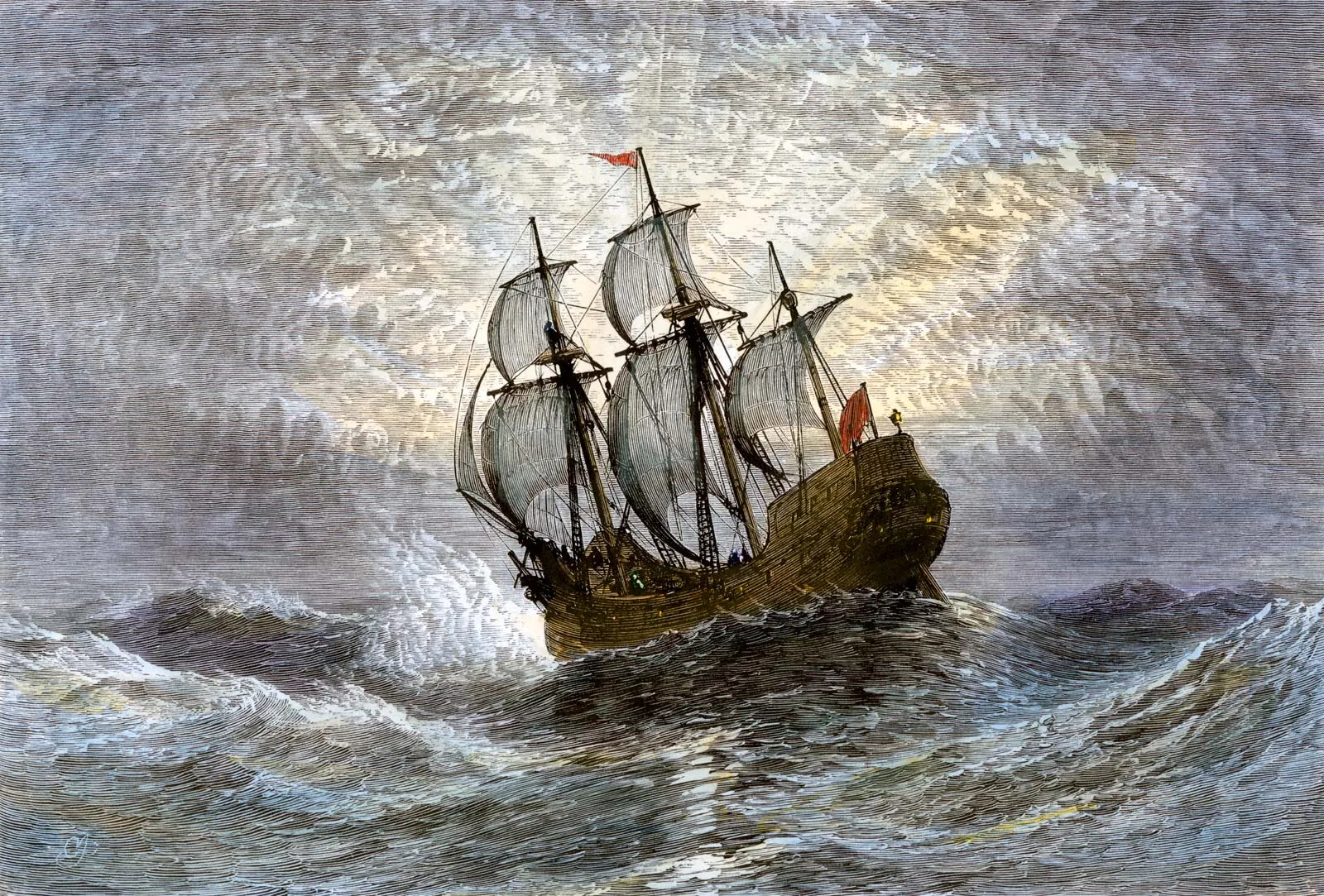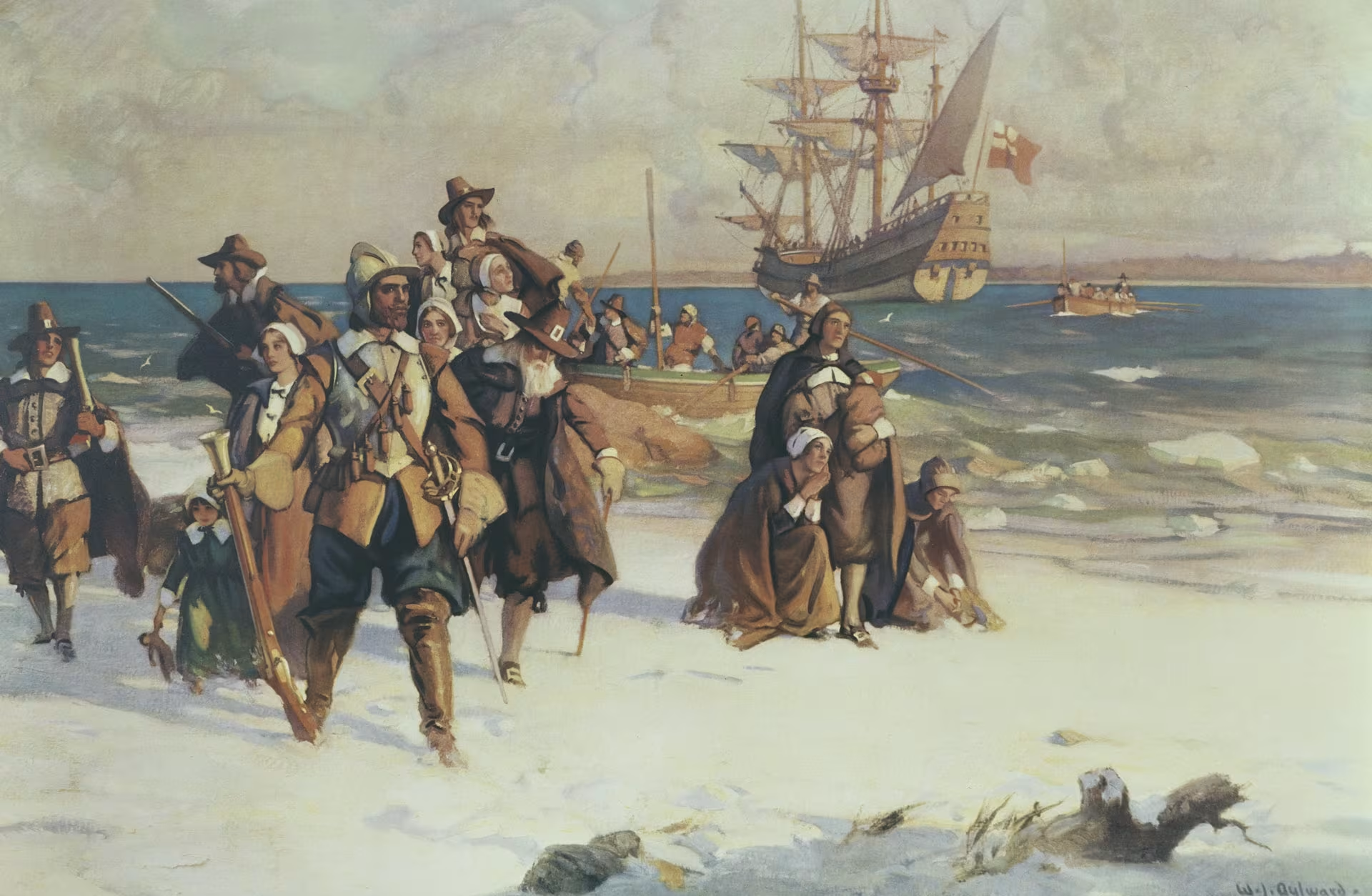The Mayflower Departs England

The wooden ship Mayflower leaving Plymouth harbor, sails unfurled as passengers crowd the deck for their Atlantic voyage.
What Happened?
In 1620, a diverse group of 102 people—religious Separatists, entrepreneurs, families, and hired workers—boarded a small merchant ship called the Mayflower. Their destination was Virginia, where they had permission to settle, but fate and storms had other plans.
The Separatists, later called 'Pilgrims,' had already fled England once, settling in the Netherlands for religious freedom. But jobs were scarce and culture felt foreign, so under William Bradford’s leadership they sought a new life across the Atlantic.
Financed by investors known as the London Adventurers, the group set out with two ships: the Speedwell and the Mayflower. When the Speedwell leaked and had to turn back, the Mayflower continued alone, carrying all passengers in dangerously cramped quarters.
The voyage was brutal. The 90-foot ship pitched endlessly in autumn storms. Families huddled below deck in a low, damp, and airless space, seasick and weak. Food was hardtack and dried meat, and even the children drank beer because water spoiled at sea.
After 66 days, instead of Virginia, they spotted Cape Cod. Navigation errors and rough seas had blown them off course, but the weary passengers were too desperate to risk sailing further. They anchored at Provincetown Harbor in November 1620.
Before going ashore, 41 men signed the Mayflower Compact, promising to form a 'civil body politic' and govern by majority rule. Though short, it was a groundbreaking agreement—an early step toward democratic self-government in America.
The settlers eventually crossed Cape Cod Bay and chose a site with fresh water and cleared fields, naming it Plymouth. There, Susanna White gave birth to Peregrine White, the first English child born in New England.
The first winter was devastating: disease and hunger claimed nearly half the settlers. Yet those who survived forged alliances with Wampanoag people, whose aid was crucial for learning to farm and endure the harsh climate.
Over time, Plymouth grew to a few thousand residents but was eventually overshadowed by the larger Massachusetts Bay Colony. Still, its story—especially the survival, alliances, and the 'First Thanksgiving'—became central to American identity.
The Mayflower’s voyage is remembered less for comfort or success than for symbolism. Its passengers endured misery for the chance to start over, and their Compact planted seeds of self-rule. But the story also reminds us: they were not arriving in an empty land—Native nations were already there, and their lives would be profoundly changed.
Why It Matters
The Mayflower’s journey represents both hope and hardship. It gave rise to one of America’s founding myths—courage, faith, and democracy—but also began a new era of colonization that reshaped the lives of Indigenous peoples. Honest remembrance means holding both truths together.
?
Why did the Mayflower passengers leave England, and what were they hoping to find in America?
What challenges made the Atlantic crossing so miserable for the passengers?
How did the Mayflower Compact influence future ideas of American democracy?
What role did the Wampanoag and other Native peoples play in the survival of the Plymouth colonists?
Why do we remember the Mayflower voyage as a turning point, and what lessons does it hold about migration today?
Dig Deeper
The events, people, and choices that propelled a group of English men and women west across the Atlantic in 1620.
A look at the Saints and Strangers aboard the Mayflower, and how they forged Plymouth Colony through hardship and cooperation.
Related

Joint-Stock Companies: Capitalism, Colonization, and Risk
Without joint-stock companies, there might be no Jamestown, no thirteen colonies—and no United States. These early capitalist ventures let investors fund risky New World settlements without bankrupting the Crown.

The 13 Colonies: Seeds of a New Nation
How did thirteen scattered colonies along the Atlantic coast grow into the foundation of a new nation?

European Exploration of the Americas
When European explorers set sail across the Atlantic, they weren’t just chasing trade routes—they were rewriting the world’s future. But discovery for some meant devastation for others.
Further Reading
Stay curious!

